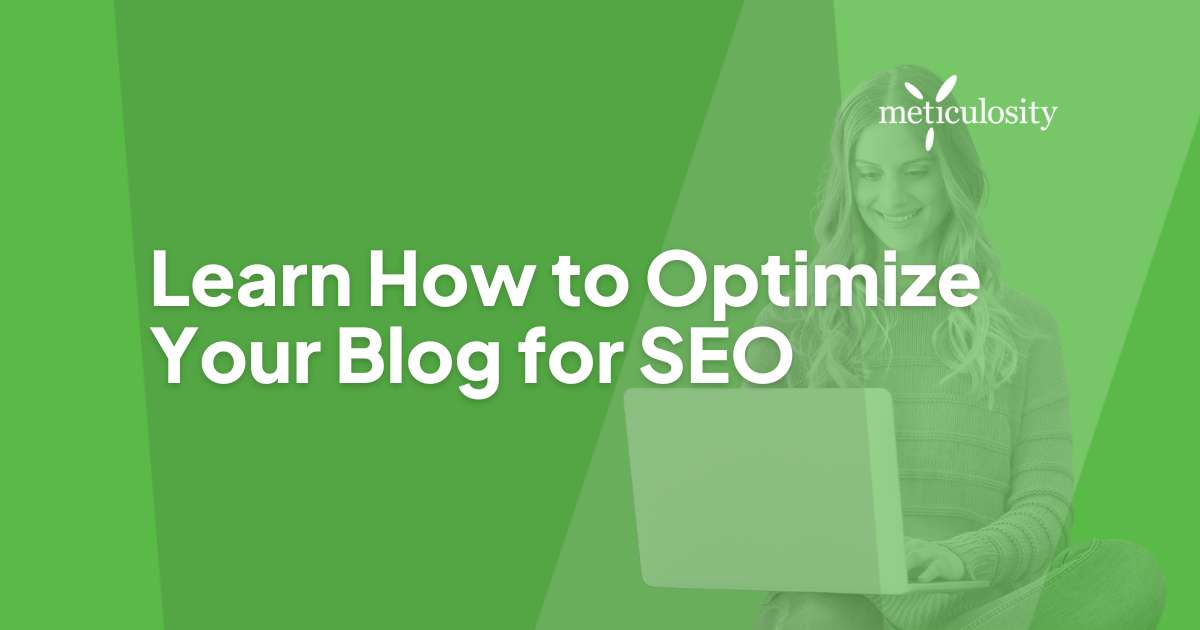Page 1 search results receive 92% of all traffic, dropping by nearly 95 percent for page 2. So, having a solid SEO strategy will help your blog SEO and get you ranking in search.
Climbing to the top of search engine results takes more than just well-written, interesting content. When blogging for SEO, it’s best to concentrate on keyword-focused content that attracts your target audience.
Does Blogging Help SEO?
Blogging helps SEO by answering a user search query with authoritative content. Quality content respected by Google will be ranked as the best answer to their search query.
1. Leverage Relevant Keyword Topics
Google manages over 40,000 searches per second–a staggering amount. Marketers who understand SEO blogging target specific phrases and keywords, zeroing in on potential customers' words.
One way to determine these popular keyword topics is to analyze the social platforms your key audience frequents. Check out what’s trending, pay attention to the exact phrases they use, and form your topic ideas.
Another way to determine which keywords are popular is to check out your competition. SEO tools like SEMrush allow you to see what keywords their websites are ranking for, and you can use them yourself if they apply to your business.
Remember, sometimes the most obvious keywords aren’t the best choices. Searchers use long-tail keywords, keyword phrases, and questions when they’re looking to solve for something.
/Imported_Blog_Media/SEO-Blogging-2-750x500-1.jpg?width=650&name=SEO-Blogging-2-750x500-1.jpg)
Your focus keywords should evolve as trends shift or your products or services change. Still, it’s important to use a variety of long-tail keywords high in search volume but face low competition.
2. Integrate Keywords Throughout Your Blog Posts
Once you’ve determined your target keywords, it’s time to develop a plan for SEO on your blog posts. Explore different blog topics, deciding on a subject that will interest your audience. When blogging for SEO, choosing a topic that will emotionally appeal to your potential customer’s needs and desires is important.
As you write the post, seamlessly incorporate keywords throughout the content and your SEO Meta Tags. The primary keyword should appear in:
- Body Content
- Title Tag
- Meta description
- Page headings and subheadings (H1, H2, H3, etc)
- URL
- Image filename
- Image alt text
Additional SEO blogging tips include using a natural writing style and avoiding keyword stuffing. Keyword stuffing can make your content feel too forced, insulting the visitor’s intelligence and lowering the blog’s quality.
3. Connect With Influencers
When focusing on SEO blogging, don’t shy away from linking to other relevant articles or blogs. Providing links to reputable websites offers additional reading material to your visitors and shows them you’ve done your research.
Using research-supported statistics from influential websites is an excellent way to strengthen a blog post. This helps you create a convincing argument that gets readers thinking.
SEO Should Always Start with the Basics
4. Write Longer, Easily Scanned Blog Posts
With the average human attention span being about eight seconds, shorter blog posts might seem like the best option. However, search engines typically favor longer articles that cover a topic in depth.
So, writing a helpful and thoroughly researched blog post has a greater chance of ranking in the top search engine results. Longer posts simply make it easier for your target keyword, along with related keywords, to rank.
Blog Post Length
The more content on your page, the more opportunities search engines have to decipher what your post is about. We recommend writing a minimum of 1,200 words per post. This length provides search engines with plenty of keywords and text to crawl.
Create scannable, easy-to-read posts that feature concise sentences and paragraphs. Long-winded sentences can be broken up and paragraphs into 2-3 sentences. Take advantage of bulleted lists and subheadings, which grab readers' attention.
/Imported_Blog_Media/SEO-Blogging-3-750x500-1.jpg?width=650&name=SEO-Blogging-3-750x500-1.jpg)
5. Add Internal Links Throughout the Post
Internal linking to relevant posts on your blog helps search engines crawl your content and see the content relationships. It also exposes the audience to more of your company’s content, helping you establish credibility. Extra links encourage the visitor to spend more time on your site, increasing the potential for a sale.
Use Natural Anchor Text Links
When creating internal links, use natural language for the anchor text. Use descriptive keywords that give visitors a sense of what they’ll find when they click on the link. Avoid force-feeding links to your top web pages or featured products. Doing this will only turn off readers and could even lead to search engines penalizing your site.
YOAST SEO Premium makes internal linking a breeze and is an absolute "must-have" for anyone running a WordPress blog.
While linking all your blogs and pages is tempting, it’s important not to go overboard with internal linking. Only choose links that best enhance the insight you’re writing about and can be incorporated naturally.
Over to You
If your goal is for your website to rank at the top of page one, it’s important to focus on crafting blogs that users and search engines love. When you optimize your blogs for both, you’ll earn higher rankings in SERPs, receive high-quality web traffic, and increase conversion rates.






